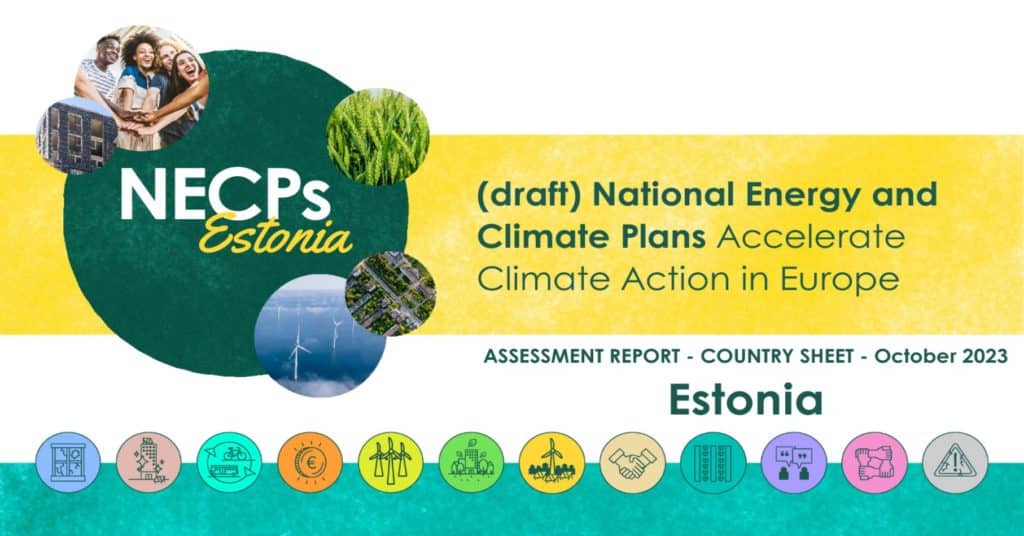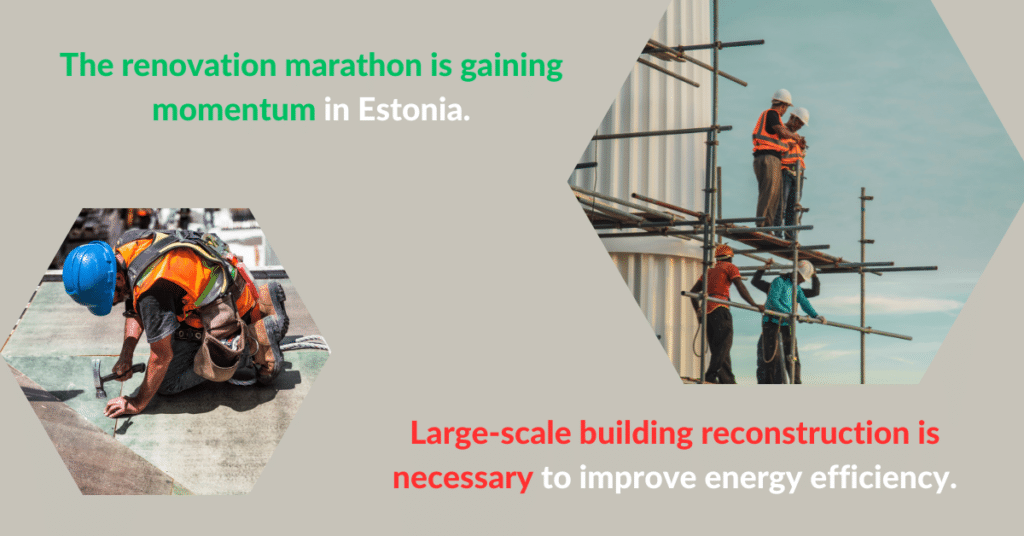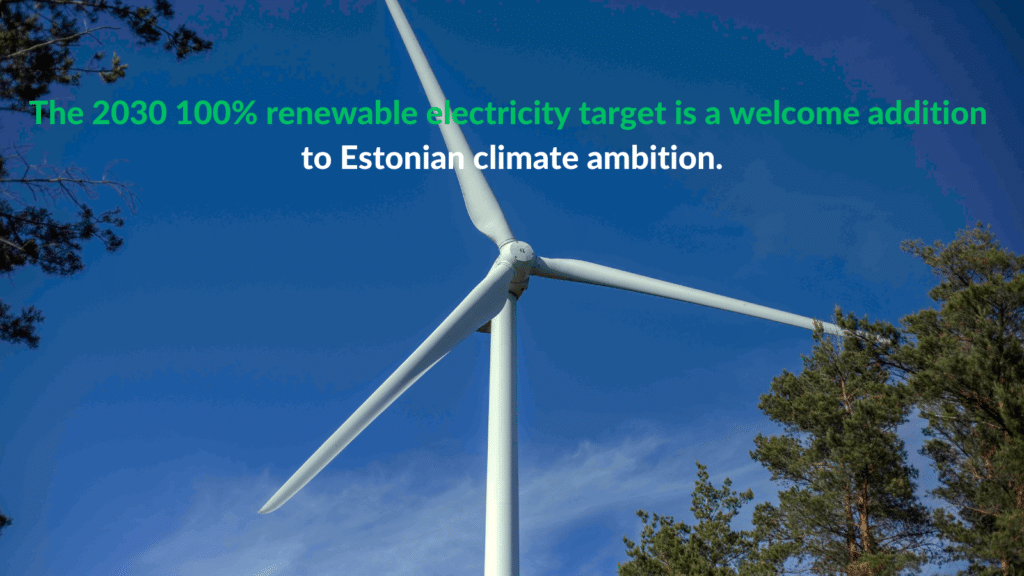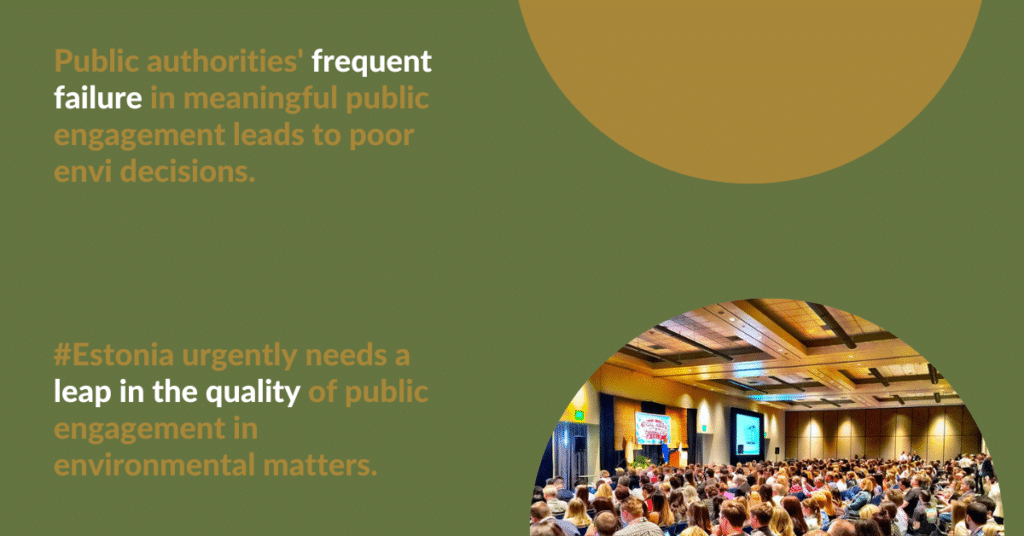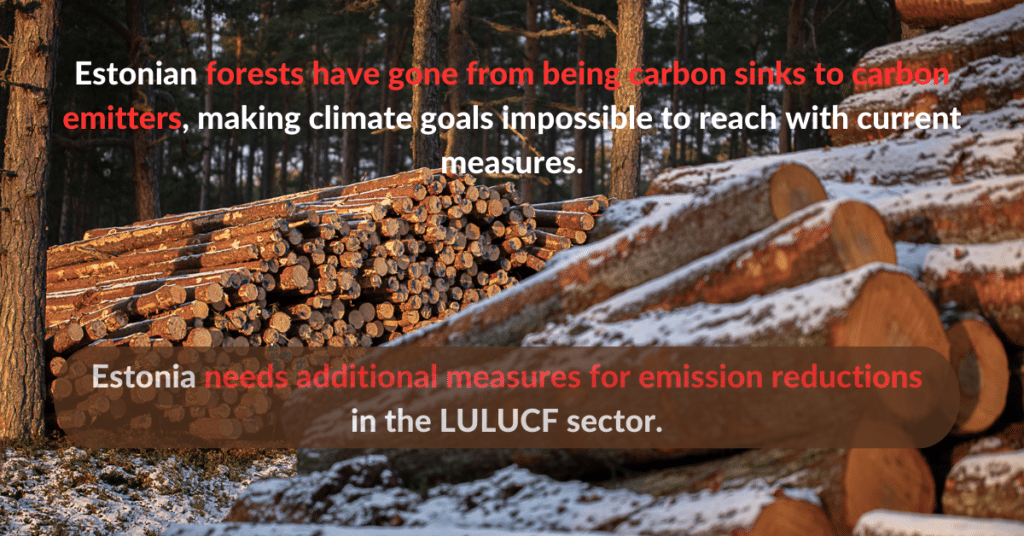Estonian NECP
Estonia needs a clear decision and concrete plan for a 100% renewable energy trajectory, which is clean and affordable to all, based on energy sufficiency and energy democracy. The government has adopted the goal to cover local consumption by 100% renewable electricity by year 2030, yet plans to execute this are vague and commitment is ill-measured. NECP can be the tool to set proper decision-making processes and execution plans.
Click HERE to download the Estonian draft NECP country assessment
Estonia – climate action progress in figures
Check Estonia’s implementation of its National Energy and Climate Plan
Estonia has adopted the ambitious goal to produce the same amount of electricity that is annually consumed (100%) from renewable energy sources by 2030, yet plans to achieve this are vague and no clear phase out date for using oil shale is set.
As of 2022, Estonia was not fully on track to implement its old 2019 NECP, whose ambition is now obsolete. Estonia’s overall emissions were on track with the trajectories projected in the old 2019 NECP – despite they’ve increased after the sharp drop of the pandemic year (2020). However, implementation was lagging behind in the LULUCF sector, which did not serve as a carbon sink in 2022, and in some sectors not covered by ETS, such as waste – where emissions are not decreasing fast enough to align with the 2019 NECP scenarios – and transport – where emissions are now higher than pre-pandemic levels
Emissions are also on the rise in the agriculture sector. For primary and final energy consumption, the NECP tracker only includes the 2019 NECP targets for 2030 (i.e. not scenarios), hence a full comparison is not possible. Estonia seems capable of achieving these unambitious targets, as long as it halts the increase in primary energy consumption experienced in the past two years. In 2022, the share of renewables in final energy consumption exceeded expectations of the 2019 NECP (38.46% compared to 33%), signalling that much higher ambition is possible.
Check here our latest briefing from October 2024 “Mind the NECP Gap”
NECPs Explainer
If we were to tell you in one minute everything about EU National and Energy Climate Plans (NECPs), this is how we’d do it. Watch the video and see by yourself the links between National Energy and Climate Plans and our day-to-day European lives.

